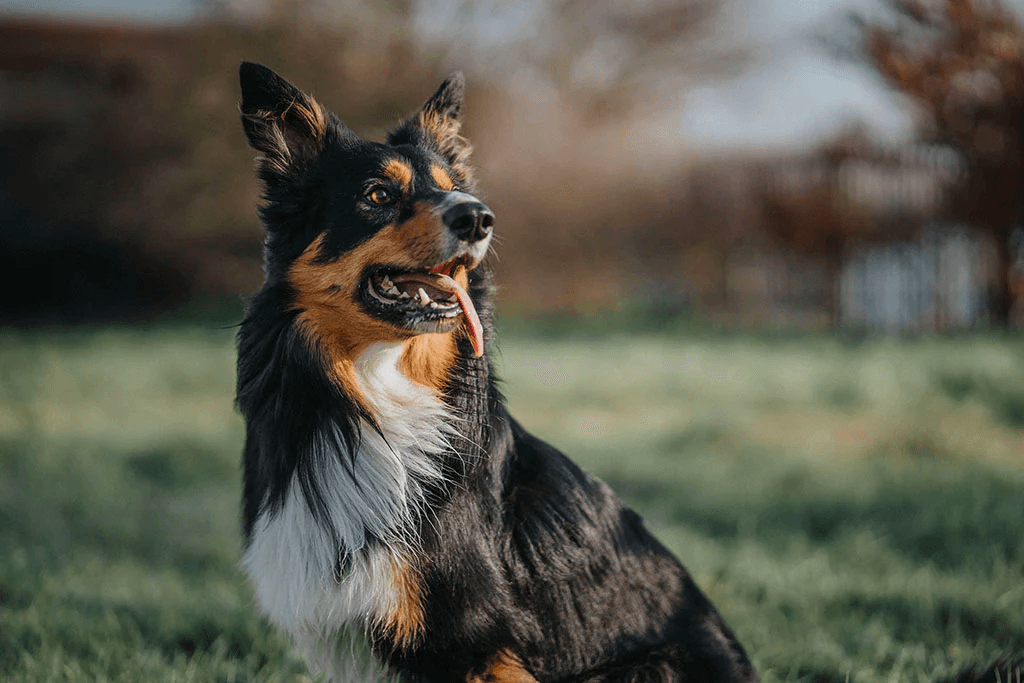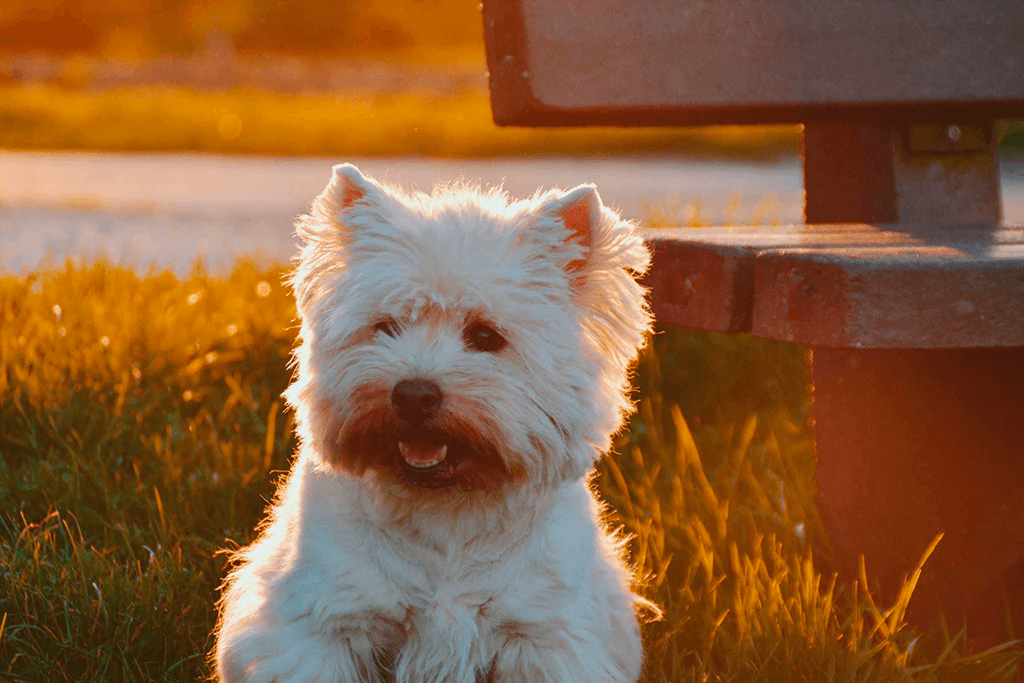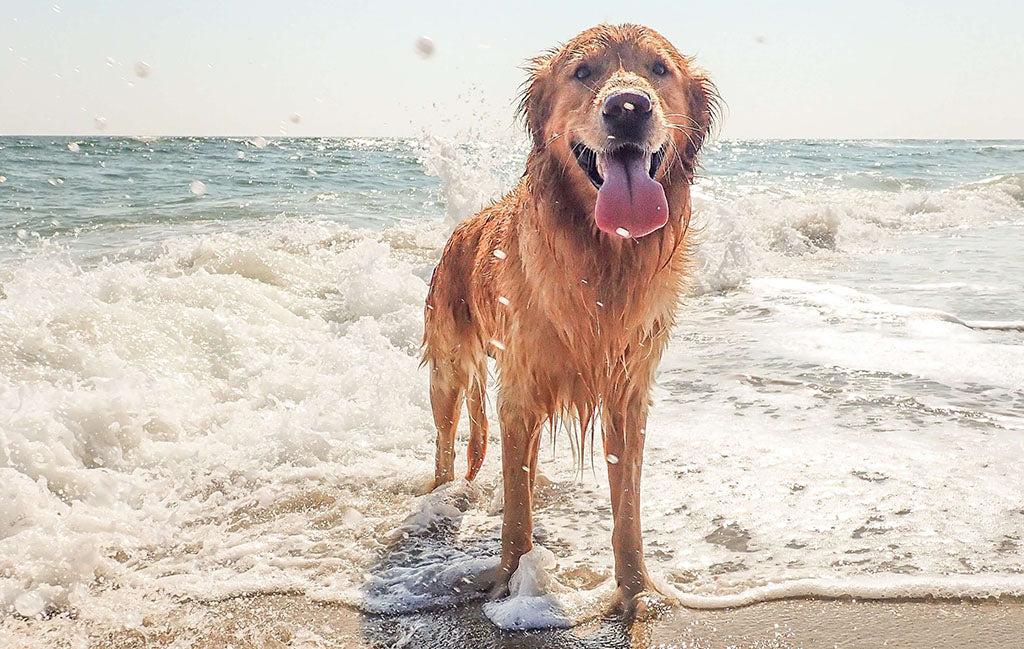If your dog is suddenly aggressive, visibly upset and acting strangely, this helpful guide from DVM Wendy Toth will help you understand why your dog is acting this way, and what you can do to help change their behavior.
Why Is My Dog Suddenly Aggressive? 8 Possible Causes & What to Do

Quick takeaway: There can be lots of reasons why a dog suddenly becomes agressive. Some of the most common reasons for sudden aggressive behavior in dogs include a fear or anxiety being triggered, a sudden pain or the onset of an illness, resource guarding (when your dog wants to protect something they see as theirs, like a toy or their food bowl), and changes in environment or routine. If your dog is suddenly aggressive, it’s a good idea to ask your veterinarian for support.
My Dog Is Suddenly Being Aggressive, What’s Happened?
If you’re wondering, ‘Why is my dog suddenly aggressive?’ you are probably feeling worried, or maybe even scared, by a surprising change in your dog’s behavior. Adult dogs tend to be creatures of habit. Unexpected reactive behavior with no apparent cause can leave you feeling like your pet is a stranger.
The good news is that by identifying the trigger and addressing the root cause, which in many cases is a fear or stressor within your control, it is possible to help your pup and to prevent their aggressive behavior from hurting them or those around them. If you’re unsure what might be causing the change in how your dog is acting, call the vet and ask for their support.
While your dog’s aggressive behavior continues, exercise care when interacting with them and use a calm, reassuring approach. Make sure everyone is safe by limiting your dog’s exposure to new people and other animals.
In the meantime, we’ll break down some common causes for sudden dog aggression, so that you and your pet can find help fast.
What Is Sudden Dog Aggression?
Sudden aggression in dogs is most broadly defined as an “adverse behavioral change,” according to a 2022 study in the journal Animals on the causes of canine aggression. More specifically, we’re referring to unexpected and intense aggressive behavior that arises without a clear warning or trigger. Sudden freezing, intense staring, lunging, and biting can all be characterized as sudden aggression.
The most important thing to note is the lack of a clear cause or trigger.
For instance, let’s say your puppy gets into the habit of barking loudly at the mail truck. If that behavior is never addressed when they’re small it may be seen as aggressive once your pup grows into a full-grown dog. But in this case, the behavior remains consistent. You’re looking at a training issue with an apparent trigger; Your dog may be larger, but the behavior is the same.
Sudden aggression, on the other hand, cannot be easily traced back to a predictable stimulus or pattern; it seems to appear out of nowhere.
According to the study in Animals, communication of any kind (including aggression) is a natural part of a dog’s behavior. However, a sudden shift towards aggression often points to deeper behavioral or medical issues.
8 Common Causes of Sudden Dog Aggression

“Several medical or behavioral reasons can cause a normally calm dog to act aggressively,” says Gary Dattner, DVM, and Chief Veterinary Officer of Tandem Vet Care. “Medically speaking, pain, neurological disease, general hormonal problems, sensory decline, or infections can all be reasons for sudden aggressiveness,” he says.
Sometimes, a sudden change in your pup’s behavior, like unexpected aggression, can be linked to emotional triggers like fear of a specific stressor, separation anxiety, limited socialization, or even redirected frustration. While the behavior might seem to come out of the blue, there’s often an underlying reason.
Let’s take a closer look at some of the most common reasons behind aggressive behavior in dogs, so you can better understand and support your furry friend.
- Fear and Anxiety
Fear-based aggression happens when your dog lashes out at a perceived threat. The behavior may seem sudden if the trigger is not evident to you, for instance, if a loud garbage truck passes by, or your dog sees a new object on your usual walk.
Fearful aggression is often a one-time response. If it keeps happening, then it could be a sign of an underlying anxiety disorder.
- Pain or Illness
Aggression due to pain or illness is a defensive response. If a dog is hurting or unwell, they may react aggressively, especially when someone tries to help. This can include treating a wound or administering medication. Don’t take it personally; it’s often just their way of saying, “I don’t feel good.” Oftentimes, the pet parent is on the receiving end of this frightening behavior and may not see it for what it is: a pain response. It’s extremely important to visit your veterinarian if you suspect your dog is reacting to pain.
- Resource Guarding
Resource guarding happens when a dog tries to protect something they see as valuable, such as their food, toy, a favorite person, or even a spot on the couch. Sometimes it’s about defending what’s “theirs,” but it can also involve posturing or play that mimics dominant behavior. It’s especially common in multi-pet households.
- Hormonal Changes
If you’re asking, “Why is my female dog suddenly aggressive?” Maternal aggression could be the cause. New mothers may fiercely protect their puppies and their nesting space. This behavior is instinctual.
Then there’s “dog puberty.” A 2020 study found that adolescent-phase dogs may become disobedient or irritable, behavior which is sometimes interpreted as aggression. But the behavior does not last. Hypothyroidism is another potential concern.
- Cognitive Dysfunction in Senior Dogs
Cognitive Dysfunction Syndrome (CDS) is a common age-related disease in dogs that causes deterioration similar to Alzheimer’s disease in humans. Memory, learning, and awareness can all be impacted, sometimes leading to aggression that appears out of the blue, according to the Riney Canine Health Center at Cornell. CDS usually begins to appear in dogs after the age of 9. Symptoms include:
- Disorientation
- Sleep pattern changes
- House-soiling
- Anxiety
- Learning changes
- Poor Socialization, or Past Trauma
“A fearful dog has a larger risk of developing aggression, and fear is often an intricate component of aggression,” according to a 2023 study in Sweden on behavior interventions for dog aggression. Proper socialization during a puppy’s critical development period (about 3 to 14 weeks of age) is essential. At the same time, dogs that have experienced trauma, such as abuse or neglect, often exhibit heightened aggression.
- Redirected Aggression
With redirected or “displaced aggression,” the dog gets frustrated about something it can’t reach, and lashes out at whoever or whatever is closest. It’s not calculated; it’s impulsive and often catches people off guard.
- Changes in Environment or Routine
Dogs thrive on routine. Big changes like moving, the arrival of a baby or new pet, or shifting schedules, can cause stress and behavioral issues (7).

Why Is My Dog Suddenly Aggressive Towards Me?

Dogs often direct aggressive behavior toward the person closest to the situation, especially in cases of pain, illness, cognitive dysfunction, and redirected aggression.
Staying calm in the face of your dog’s aggression is hard, but crucial. Avoid shouting at or punishing your dog. Instead, speak softly, avoid direct eye contact (which may be seen as a challenge), and move slowly.
Why Is My Dog Suddenly Aggressive Towards My Other Dog?
Aggression between household dogs is often caused by resource guarding, redirected aggression, or simple competition. In the latter case, if no injury occurs, it may just be rough play.
If you’re asking, “Why is my dog suddenly aggressive towards my other dog?” separate your dogs until both are calm and regulated, then closely monitor interactions until the trigger is identified.
Why Is My Dog Suddenly Aggressive Towards Other Dogs on Walks?
Some dogs exhibit leash aggression, a form of frustration caused by restraint. This is especially likely if they’re unable to approach (or avoid) other dogs on their own terms. You may see them barking, lunging, or growling. Over time, this behavior can become habitual.
Negative past experiences or a lack of social skills may also be at play. In these cases, your dog may respond defensively, even if the other dog is neutral.
How to Stop Dog Aggression
Once medical reasons have been ruled out, owners should work with a qualified behavior expert to tackle the underlying motivations and reasons for their dog’s aggression.
While doing so, pet parents can use a few general strategies, including:
- Close observation: Note the situations in which the aggression occurs and look for patterns.
- Positive reinforcement: This method helps your dog make better choices when faced with a challenging situation or trigger. Provide a high-value treat while your dog is present with the trigger to create a positive association.
- Gentle tools: Positive reinforcement should be the primary training method in day-to-day situations, avoiding punishment and instead using crates, leashes, and muzzles during training.
How to Stop Dog Aggression Towards Other Dogs
Keeping the above strategies in mind, multi-dog households can layer on a few more modifications at home. “Dog-dog aggression can be difficult to live with but is often easily managed with separation, management and removing resources,” says Kate LaSala, a professional dog trainer, certified behavior consultant and owner of Rescued By Training.
She recommends using baby gates to separate dogs during mealtime and identifying red flags when choosing a trainer: “Avoid anyone who guarantees results, uses terms like ‘pack leader’ or ‘alpha,’ or has no education or professional credentials.”
Structured training plans, management tools, and, in some cases, medication can be helpful.
Will Neutering a Dog Help With Aggression?
Neutering can help reduce hormone-driven aggression in some dogs, such as inter-male conflicts or mounting, but it is not a guarantee. According to the American Veterinary Medical Association, neutering can reduce hormone-related behaviors in intact males but may not significantly change aggression driven by fear, anxiety, or poor socialization. Your veterinarian can help you decipher when neutering is recommended.
When to Be Concerned About Sudden Aggression
If your dog suddenly bites without warning, becomes aggressive towards children or the elderly, or attacks a human or an animal, their behavior requires immediate intervention from a veterinarian. Unprovoked attacks can increase in severity and frequency if the dog does not receive behavioral and/or medical intervention to help tackle its behavior.
Final Thoughts on How To Help a Suddenly Aggressive Dog
Sudden aggression in dogs is often a sign that something deeper is going on. “Any sudden behavior change, whether aggression, housetraining lapses, reluctance to go on walks or any unusual behavior, requires a vet check to rule out any underlying contributing physical issues,” says LaSala.
“Often behavior is the canary in the coalmine, and people notice behavior changes before obvious physical signs are present.”
Dealing with any new behavior issue, especially aggression, can feel overwhelming, but you have options. The sooner you take action, the better. With a mix of patience, careful observation, and support from a professional, you can start to understand what’s really going on and take steps to help your dog feel safe, supported, and back to their best self.
 W
W



